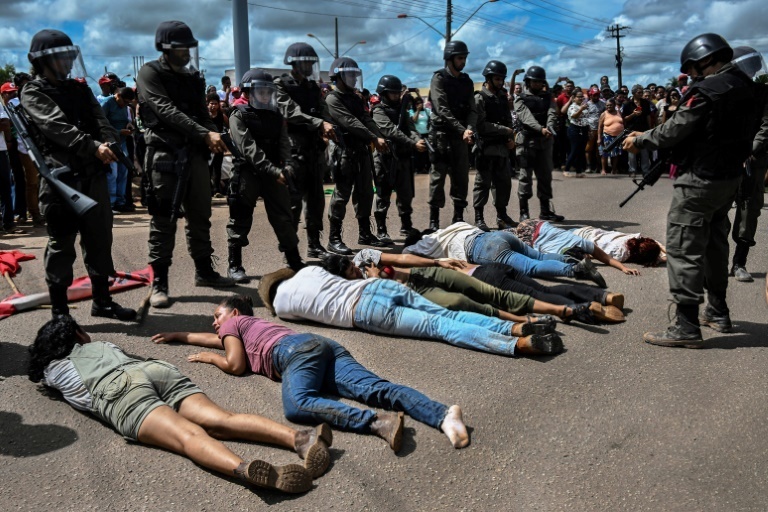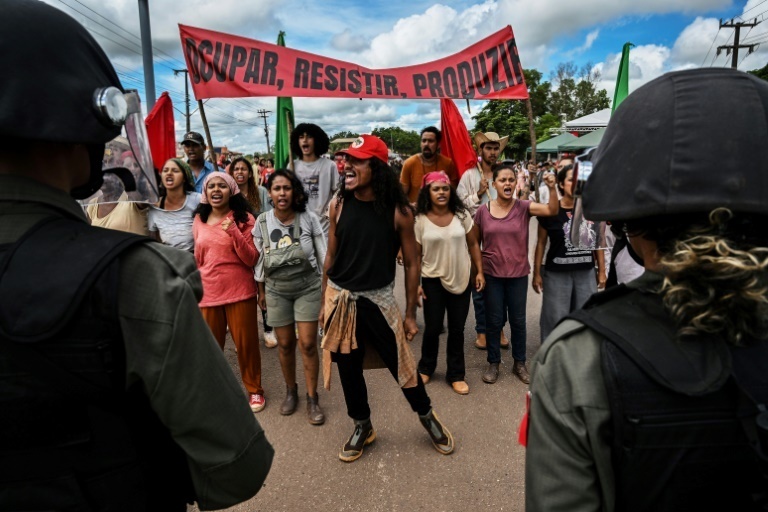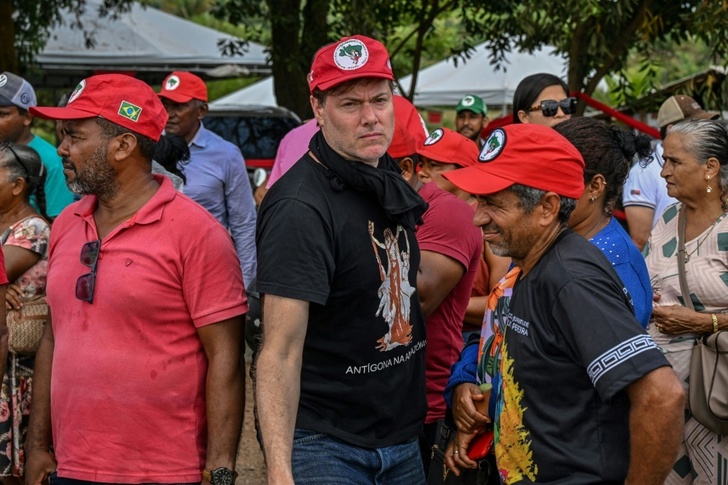He has been called "the most controversial director in theater," so it's no surprise Milo Rau's latest project is graphic and visceral: an updated version of "Antigone" transposing the Greek tragedy to the Amazon rainforest and reenacting a bloody massacre.
The Swiss director, who heads the NTGent theater in the Belgian city of Ghent, has made his name as a provocateur, whether traveling to Moscow to stage the trial of Russian protest punk band Pussy Riot, using children to play out the story of notorious Belgian pedophile Marc Dutroux, or trying to recruit Islamic State jihadists as actors.
Now the acclaimed director has landed in the small town of Eldorado dos Carajas, in northern Brazil, to recreate a 1996 massacre in which police opened fire on impoverished farmers who were protesting for land, killing 19 people in cold blood.
A short film of the reenacted massacre will play during "Antigone in the Amazon," a theatrical alarm bell warning of the dangers of humankind's destruction of the rainforest, which will premiere on May 13 at Rau's theater.

Rau, 46, spent nearly a month in Brazil producing the reenactment.
That included tracking down survivors of the 27-year-old massacre to join as actors in the performance, in which police in riot gear descended on the defenseless protesters with harrowing realism, beating them, dragging them through the street and gunning them down.
Directing the survivors as actors in the grisly scene was a delicate exercise, Rau admits.
"In the nucleus, in the center, there is this super dark history. So today we restaged it with the survivors, (who were) at this very spot in the very moment," he told AFP in an interview.
"You go through the trauma again to remember it, but also to go a step further."
- Potent points of convergence -

Thousands of members of the Landless Workers' Movement (MST) -- a radical group known for fighting Brazil's deep-rooted inequalities by seizing land for impoverished small-scale farmers -- had invaded a local ranch.
When they got word of plans to evict them, they protested by blocking the highway through town, a crucial artery for loggers, miners, cattle ranchers and others profiting from the plunder of the rainforest.
State police, who reportedly had orders to clear the highway by any means necessary, opened fire on the protesters.
Rau, who sported a red MST hat and black T-shirt, openly admires the controversial movement, which was founded in the 1980s and also fights to protect the environment through sustainable agriculture.

He added he sees potent points of convergence between Sophocles' ancient classic and modern-day Brazil, where the Amazon suffered a surge in destruction under the government of far-right ex-president Jair Bolsonaro (2019-2022).
"Antigone basically is a fight of the people against dictatorship," he said.
MST, he said, is about "Indigenous people, landless people, rural people" fighting against "the state and big landowners, who are personified in 'Antigone' by Creon."
- 'Last frontier' -
Rau, who calls the Amazon the "last frontier" outside modern society's reach, signed an open letter during the 2018 campaign that brought Bolsonaro to power, warning that electing him would be a "catastrophe."
The director said he saw a sliver of hope in the election last year of veteran leftist Luiz Inacio Lula da Silva, who previously led Brazil from 2003 to 2010 and made a presidential comeback in January after defeating Bolsonaro at the polls.
But he found troubling symbolism in the ribbon of asphalt -- site of the massacre -- that serves as his set.
"It's really the middle of the Amazon, it's the street where you have all these trucks going up and down to exploit the Amazon... It's a symbol of capitalism," he said.
"You have all these layers, and that's what made it for me."
msi/jhb/tjj
© Agence France-Presse
Your content is great. However, if any of the content contained herein violates any rights of yours, including those of copyright, please contact us immediately by e-mail at media[@]kissrpr.com.

Source: Story.KISSPR.com

